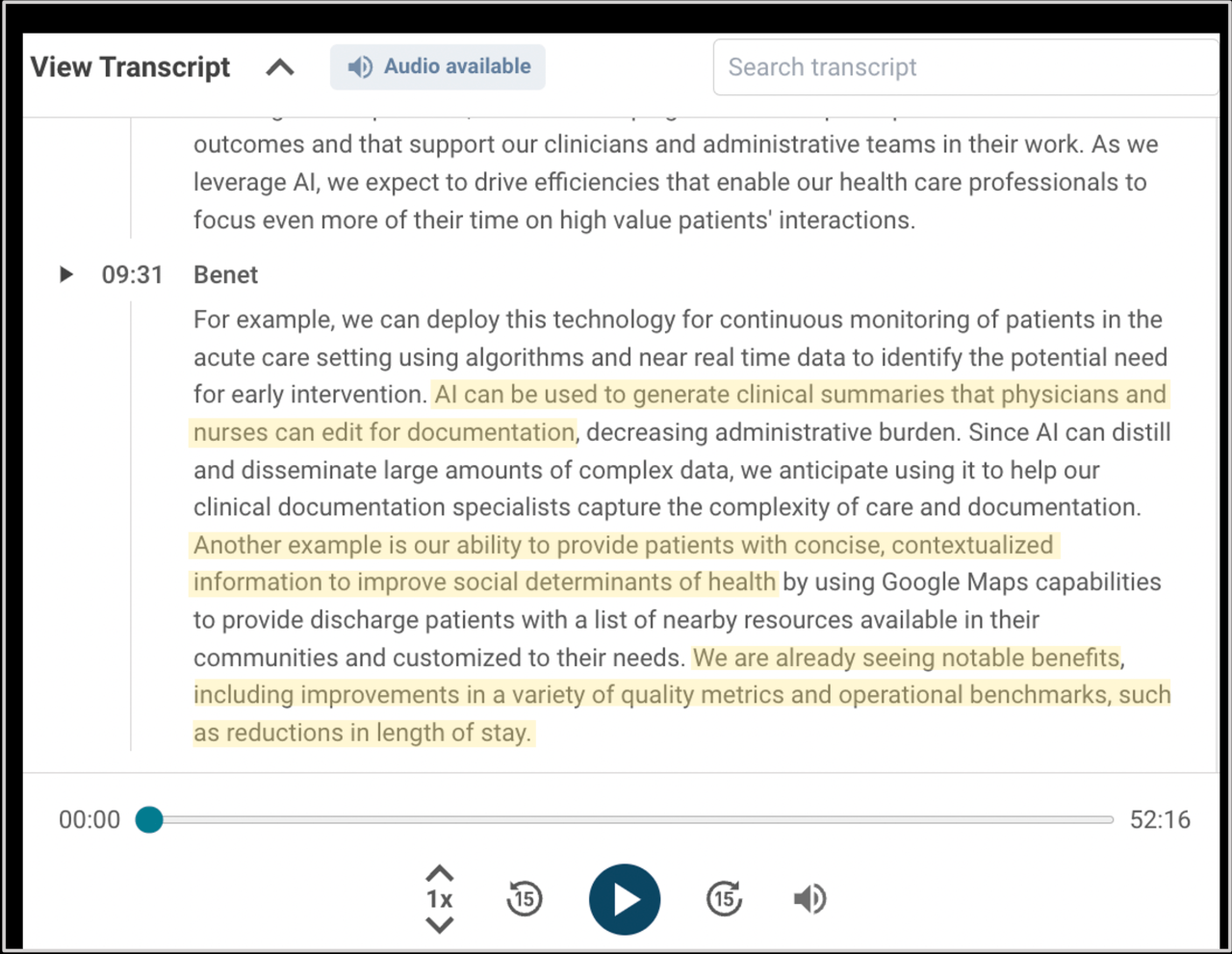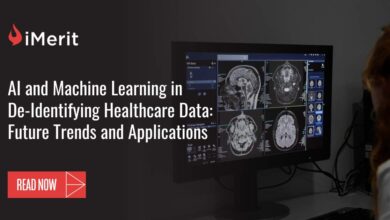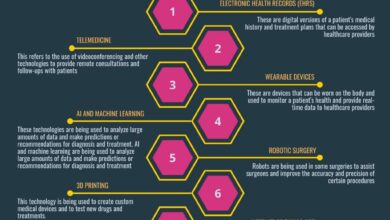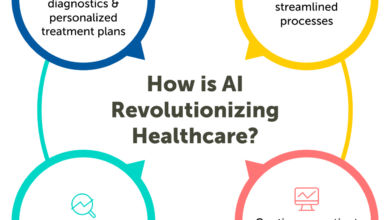
Kaiser Permanente Abridge AI Clinical Documentation Rollout
Kaiser Permanente Abridge AI clinical documentation rollout: Imagine a future where doctors spend less time on paperwork and more time with patients. That’s the promise of Kaiser Permanente’s ambitious project integrating Abridge AI into its clinical workflow. This isn’t just about streamlining processes; it’s about revolutionizing how medical information is captured, analyzed, and used to improve patient care. We’ll dive into the details of this exciting initiative, exploring its potential benefits and challenges.
This rollout represents a significant leap forward in leveraging AI for healthcare. We’ll examine Kaiser Permanente’s strategic approach, the specific features of Abridge AI, the implementation plan, and the crucial considerations around data security and patient privacy. The goal? To understand how this technology could reshape the future of healthcare delivery and enhance the patient experience.
Kaiser Permanente’s AI Initiatives

Source: cbinsights.com
Kaiser Permanente, a large integrated managed care consortium, is strategically leveraging artificial intelligence (AI) to enhance patient care, improve operational efficiency, and drive down costs. Their approach is characterized by a measured, phased rollout focusing on areas with clear potential for impact and a strong emphasis on data security and ethical considerations. This isn’t a knee-jerk reaction to the AI hype; rather, it’s a carefully considered plan built upon years of data accumulation and internal expertise.Kaiser Permanente’s AI strategy relies on a robust technological infrastructure.
This includes substantial computing power to handle the massive datasets generated by their extensive network of hospitals, clinics, and physician offices. They’ve invested heavily in cloud computing solutions, enabling scalability and accessibility for their AI projects. Furthermore, their investment in data warehousing and analytics platforms allows for the efficient processing and analysis of patient data, a critical component for effective AI model training and deployment.
Robust cybersecurity measures are also integral to their infrastructure, ensuring the protection of sensitive patient information.
Successful AI Implementations at Kaiser Permanente
Several successful AI implementations within Kaiser Permanente demonstrate the effectiveness of their strategy. One notable example is the use of AI-powered predictive models to identify patients at high risk of developing certain conditions, such as heart failure or diabetes. This allows for proactive interventions and preventative care, leading to better health outcomes and reduced hospital readmissions. Another example involves the application of natural language processing (NLP) to analyze clinical notes and other unstructured data, extracting key information for improved care coordination and research purposes.
This streamlines administrative tasks and frees up clinicians’ time for direct patient care. Finally, AI is being used to optimize scheduling and resource allocation within their facilities, leading to improved operational efficiency.
Comparison with Other Healthcare Providers
Compared to other major healthcare providers, Kaiser Permanente’s AI approach stands out due to its integrated nature. Many large healthcare systems are grappling with data silos and interoperability challenges, hindering their ability to effectively utilize AI across their entire network. Kaiser Permanente’s integrated structure provides a significant advantage, allowing for seamless data sharing and the development of AI solutions that leverage a comprehensive view of patient data.
While other organizations might focus on specific AI applications, such as image analysis or drug discovery, Kaiser Permanente demonstrates a more holistic approach, integrating AI across various aspects of care delivery and administration. This integrated approach, however, also requires a significant investment in infrastructure and expertise, a hurdle that not all healthcare providers can easily overcome.
Abridge AI Clinical Documentation System
Abridge AI is a revolutionary clinical documentation system designed to streamline the workflow for healthcare professionals, ultimately improving patient care and reducing administrative burden. It leverages the power of artificial intelligence to automate the transcription and summarization of clinical encounters, freeing up valuable time for doctors and nurses to focus on patient interaction and treatment. The system integrates seamlessly with existing Electronic Health Record (EHR) systems, offering a user-friendly interface and a range of features to enhance efficiency and accuracy.Abridge AI’s core functionality centers around its advanced speech-to-text technology and natural language processing capabilities.
During a patient visit, clinicians can dictate their notes, and Abridge AI converts the speech into text in real-time, generating a clean, accurate clinical note. Beyond basic transcription, Abridge AI analyzes the content to identify key findings, diagnoses, and treatment plans, automatically populating relevant sections of the EHR. This reduces manual data entry, minimizes errors, and ensures consistent documentation.
Key Features and Benefits of Abridge AI for Healthcare Professionals
Abridge AI offers a suite of features designed to enhance the efficiency and effectiveness of healthcare professionals. The system’s real-time transcription capabilities significantly reduce the time spent on documentation, allowing clinicians to dedicate more time to direct patient care. The automated summarization feature provides a concise overview of the encounter, making it easier to review key information quickly.
Furthermore, Abridge AI’s integration with existing EHR systems ensures seamless data flow and reduces the risk of data entry errors. The system’s intelligent suggestions and auto-completion features also help clinicians document more comprehensively and accurately. The resulting improved documentation quality contributes to better care coordination and enhanced patient safety.
Kaiser Permanente’s Abridge AI clinical documentation rollout aims to streamline workflows, but accurate data is crucial. This reminds me of the recent news about Monali Thakur being hospitalized after struggling to breathe – read more about it and respiratory disease prevention here: monali thakur hospitalised after struggling to breathe how to prevent respiratory diseases. The importance of clear, concise medical records, as facilitated by Abridge AI, becomes even clearer when considering such serious health events.
Integration Process of Abridge AI into Kaiser Permanente’s Existing Systems
The integration of Abridge AI into Kaiser Permanente’s existing systems involves a multi-phased approach. Initially, a pilot program was launched in a select number of clinics to test the system’s functionality and gather feedback from healthcare professionals. This pilot phase allowed for the identification and resolution of any technical issues and provided valuable insights into the system’s usability.
Kaiser Permanente’s Abridge AI clinical documentation rollout is a big deal, aiming to streamline workflows and improve accuracy. However, news about the financial struggles of other healthcare systems, like the steward ohio hospitals closures pennsylvania facility at risk , makes you wonder about the long-term sustainability of such tech investments. Ultimately, the success of Kaiser’s AI initiative depends on factors beyond just the technology itself.
Following a successful pilot, the system was rolled out to additional clinics, with ongoing training and support provided to healthcare professionals. The integration process involves configuring Abridge AI to seamlessly interface with Kaiser Permanente’s EHR, ensuring data security and compliance with relevant regulations. This includes establishing secure data transfer protocols and implementing appropriate authentication mechanisms. The entire process requires careful planning, collaboration between IT teams, and ongoing monitoring to ensure optimal performance.
Potential Challenges in Integrating Abridge AI with Kaiser Permanente’s EHR
While the integration of Abridge AI offers numerous benefits, potential challenges exist. One key challenge is ensuring seamless interoperability with Kaiser Permanente’s existing EHR system, which may involve complex data mapping and customization. Another challenge lies in addressing potential concerns regarding data security and privacy. Robust security measures must be implemented to protect patient data and comply with HIPAA regulations.
Furthermore, the successful adoption of Abridge AI requires comprehensive training and support for healthcare professionals to ensure they can effectively utilize the system’s features. Resistance to change among some clinicians may also pose a challenge, necessitating a strong change management strategy. Finally, ongoing monitoring and evaluation are crucial to identify and address any unexpected issues that may arise during the integration and post-implementation phases.
For example, initial implementation might reveal the need for adjustments to the system’s natural language processing to accurately interpret Kaiser Permanente’s specific clinical terminology or workflows.
Rollout Strategy and Implementation: Kaiser Permanente Abridge Ai Clinical Documentation Rollout

Source: aitech365.com
Successfully integrating Abridge AI into Kaiser Permanente’s workflow requires a carefully planned and executed rollout strategy. This involves a phased approach, comprehensive training, and proactive change management to ensure a smooth transition and maximize adoption across all facilities. The key is to minimize disruption to patient care while maximizing the benefits of the new system.
Phased Rollout Plan
The rollout of Abridge AI will be implemented in phases, starting with a pilot program in a select group of clinics and hospitals. This allows for controlled testing, iterative improvements, and identification of potential issues before a wider deployment. The phased approach minimizes risk and allows for continuous feedback and adjustment. Phase 1 will focus on high-volume clinics with existing strong EHR integration, followed by larger hospitals in Phase 2.
Phase 3 will encompass the remaining facilities, taking into account regional variations and specific operational needs. This staged implementation ensures that resources are efficiently allocated and that support is readily available at each stage.
Rollout Timeline
The following timeline Artikels key milestones and deadlines for the Abridge AI rollout. These dates are subject to change based on progress and feedback gathered during each phase.
| Phase | Milestone | Target Date |
|---|---|---|
| Phase 1 (Pilot) | Selection of pilot sites | Q1 2024 |
| Phase 1 (Pilot) | Pilot program launch | Q2 2024 |
| Phase 1 (Pilot) | Pilot program evaluation and refinement | Q3 2024 |
| Phase 2 (Hospital Expansion) | Expansion to selected hospitals | Q4 2024 |
| Phase 2 (Hospital Expansion) | System optimization and feedback integration | Q1 2025 |
| Phase 3 (Full Deployment) | Full system rollout across all facilities | Q2 2025 – Q4 2025 |
Healthcare Staff Training Program
A comprehensive training program is crucial for successful Abridge AI adoption. This program will include various learning modalities, such as online modules, hands-on workshops, and ongoing mentorship. The curriculum will cover system functionality, best practices for using the AI tools, data privacy and security protocols, and troubleshooting common issues. Training materials will be tailored to different user roles and levels of technical expertise, ensuring that all staff receive the support they need to effectively utilize the system.
Regular refresher courses and updates will be provided to keep staff abreast of new features and functionalities.
Change Management and Addressing Staff Concerns
Implementing a new technology like Abridge AI inevitably involves managing change and addressing staff concerns. Proactive communication is key. We will utilize various channels, including town hall meetings, departmental briefings, and regular email updates, to keep staff informed about the rollout progress and address any concerns or questions. Dedicated support staff will be available to provide assistance and guidance throughout the implementation process.
Early and continuous feedback mechanisms will be established to identify and resolve any issues promptly. Furthermore, we will actively solicit feedback and suggestions from staff to continuously improve the system and its implementation. A focus on the positive impact of Abridge AI on workflow efficiency and patient care will also help mitigate concerns.
Data Security and Privacy Considerations
Implementing Abridge AI within Kaiser Permanente requires a robust approach to data security and privacy, given the sensitive nature of patient health information. Our commitment is to ensure the confidentiality, integrity, and availability of this data throughout the entire lifecycle of its use with the Abridge AI system. This commitment is underpinned by stringent security measures and unwavering adherence to relevant regulations.Data Security Measures Implemented to Protect Patient InformationKaiser Permanente employs a multi-layered security approach to protect patient data used by Abridge AI.
This includes robust network security with firewalls and intrusion detection systems, data encryption both in transit and at rest, access control mechanisms based on the principle of least privilege, and regular security audits and vulnerability assessments. Furthermore, all personnel involved in the Abridge AI project undergo rigorous security training and are subject to strict confidentiality agreements. The system itself is designed with security best practices in mind, incorporating features such as regular security patching and automated threat detection.
HIPAA and Regulatory Compliance
Compliance with the Health Insurance Portability and Accountability Act (HIPAA) and other relevant regulations is paramount. Our implementation of Abridge AI strictly adheres to HIPAA’s security and privacy rules. This includes implementing appropriate administrative, physical, and technical safeguards to protect electronic protected health information (ePHI). Regular audits are conducted to ensure ongoing compliance, and we maintain comprehensive documentation to demonstrate our adherence to these regulations.
We also actively monitor and adapt to changes in regulatory requirements to maintain compliance.
Data Anonymization and De-identification
Before data is used for training or analysis by Abridge AI, rigorous anonymization and de-identification processes are applied. This involves removing or masking any personally identifiable information (PII) such as names, addresses, dates of birth, and medical record numbers. Advanced techniques are used to ensure that the remaining data cannot be linked back to individual patients. The process is carefully documented and audited to guarantee its effectiveness and maintain data privacy.
For example, we may use differential privacy techniques which add noise to the data to prevent re-identification while still preserving the utility of the data for analysis.
Potential Risks and Mitigation Strategies
While we implement robust security measures, potential risks remain. The following table summarizes these risks and the mitigation strategies employed:
| Risk | Mitigation Strategy | Responsible Party | Timeline |
|---|---|---|---|
| Unauthorized access to patient data | Multi-factor authentication, intrusion detection systems, regular security audits | IT Security, Abridge AI Team | Ongoing |
| Data breaches due to vulnerabilities in the system | Regular security patching, vulnerability scanning, penetration testing | IT Security, Abridge AI Team | Ongoing |
| Data loss or corruption | Data backups, disaster recovery planning, data redundancy | IT Operations, Abridge AI Team | Ongoing |
| Insider threats | Background checks, security awareness training, access control based on the principle of least privilege | Human Resources, IT Security | Ongoing |
| Improper data anonymization/de-identification | Regular audits of anonymization processes, use of advanced anonymization techniques | Data Privacy Office, Abridge AI Team | Ongoing |
Impact on Clinical Workflow and Efficiency

Source: medium.com
Abridge AI’s integration into Kaiser Permanente promises a significant shift in clinical workflows, aiming to reduce physician burden and enhance the quality of patient care. By automating aspects of clinical documentation, the system frees up valuable physician time, allowing for more patient interaction and a reduction in administrative tasks. This ultimately leads to improved efficiency and a better overall patient experience.The potential impact on physician workflow is multifaceted.
The system’s ability to automatically transcribe audio recordings of patient encounters and generate structured clinical notes offers a considerable time savings. Instead of spending hours manually documenting each interaction, physicians can focus on direct patient care, review and edit the AI-generated notes, and quickly finalize the documentation process. This streamlined approach significantly reduces the time spent on administrative tasks, allowing for a more balanced and less stressful workday.
Reduced Documentation Time
Studies have shown that physicians spend a significant portion of their workday on documentation. One study published in theAnnals of Internal Medicine* estimated that physicians spend an average of two hours per day on documentation. Abridge AI has the potential to drastically reduce this time, perhaps by as much as 50% or more, depending on the specialty and complexity of the patient cases.
This translates to substantial time savings for individual physicians and a more efficient use of healthcare resources across the organization. For example, a physician who currently spends two hours daily on documentation could potentially save one hour, allowing for an additional patient visit or more focused attention on existing patients.
Improved Accuracy and Completeness of Clinical Documentation
Abridge AI’s structured data approach minimizes the risk of human error and omissions often associated with manual documentation. The system prompts physicians for essential information, ensuring completeness and adherence to clinical guidelines. This leads to higher-quality documentation that is more readily accessible for analysis and reporting. For instance, the system could flag missing information regarding allergies or medication interactions, prompting the physician to review and complete the record, reducing the chance of adverse events due to incomplete information.
The improved accuracy and completeness of the documentation also facilitates better care coordination and reduces the risk of medical errors.
Efficiency Gains Compared to Traditional Methods
Traditional methods of clinical documentation, which rely heavily on manual charting, are inherently time-consuming and prone to errors. Abridge AI offers a significant leap forward by automating the transcription and structuring of clinical notes. The efficiency gains are substantial, translating into increased physician productivity and improved patient care. A direct comparison could be drawn between a physician manually writing a comprehensive note after a 30-minute patient visit, which could take another 30 minutes or more, versus the same physician reviewing and editing an AI-generated note within 5-10 minutes.
Streamlining Clinical Processes and Reducing Administrative Burden
Abridge AI streamlines various clinical processes beyond simple documentation. The system’s ability to extract key data points from notes facilitates tasks such as billing and coding, reducing the administrative burden on staff. For example, the system can automatically identify relevant ICD codes and CPT codes based on the documented information, reducing the need for manual coding and potentially minimizing billing errors.
This automated data extraction also improves the efficiency of reporting and analytics, providing valuable insights into patient populations and clinical outcomes. This improved data flow contributes to better resource allocation and improved operational efficiency across the entire healthcare system.
User Feedback and System Optimization
Successfully rolling out Abridge AI requires a robust system for gathering and acting upon user feedback. Continuous improvement is key to ensuring the system remains effective, efficient, and well-integrated into the clinical workflow at Kaiser Permanente. This involves not only collecting feedback but also systematically analyzing it, prioritizing improvements, and iteratively updating the system based on real-world usage.
A multi-pronged approach will be crucial to optimizing Abridge AI based on user input. This includes diverse feedback channels, structured analysis techniques, and a clear process for implementing changes. The goal is to create a system where clinicians feel heard and valued, and where their feedback directly contributes to the improvement of the AI’s performance and usability.
Feedback Collection and Analysis System
A comprehensive system for collecting user feedback will utilize several methods to ensure a wide range of perspectives are captured. This will include in-app surveys triggered at specific intervals, regular focus groups with representative clinicians from different specialties, and an easily accessible online feedback portal. Quantitative data, such as system usage metrics and error rates, will be collected alongside qualitative feedback to provide a holistic understanding of user experience.
This data will then be analyzed using statistical methods and thematic analysis to identify trends and prioritize areas for improvement. For example, frequent complaints about the system’s speed could lead to investigations into database optimization or algorithm efficiency.
Kaiser Permanente’s Abridge AI clinical documentation rollout is a huge undertaking, impacting how medical information is recorded and accessed. It’s interesting to consider this in light of larger healthcare trends, like the recent news about Walmart Health’s closure, as discussed in this insightful article: despite walmart healths closure the company healthcare destination scott bowman. The article highlights the evolving landscape of healthcare delivery, which makes Kaiser’s AI initiative even more significant in its potential to improve efficiency and patient care.
Addressing User Concerns and Suggestions
A dedicated team will be responsible for reviewing and responding to all user feedback. This team will triage concerns based on severity and frequency, prioritizing critical issues impacting patient safety or workflow efficiency. A ticketing system will be used to track each feedback item, ensuring transparency and accountability. Regular updates on the status of addressed concerns will be communicated to users through the feedback portal and internal communication channels.
For example, a frequently reported issue regarding inaccurate transcriptions of specific medical terms could trigger a retraining of the AI model using a larger, more representative dataset.
Ongoing System Monitoring and Performance Evaluation, Kaiser permanente abridge ai clinical documentation rollout
Continuous monitoring of Abridge AI’s performance is crucial. Key performance indicators (KPIs) will be established and tracked regularly. These KPIs will include accuracy rates, processing times, user satisfaction scores, and the number of support tickets generated. Regular reports will be generated and reviewed by the project leadership team to identify potential problems and measure the effectiveness of implemented improvements.
For example, a drop in accuracy rates could prompt a review of the training data or an investigation into potential data biases. This data-driven approach ensures that the system is constantly evolving to meet the changing needs of its users.
Iterative Improvements and System Updates
Based on the analysis of user feedback and performance data, iterative improvements will be implemented through regular system updates. A clear process for prioritizing improvements will be established, considering factors such as impact on clinical workflow, patient safety, and user satisfaction. A rigorous testing process will be employed before each update to ensure that new features and changes do not introduce new bugs or negatively impact existing functionality.
This continuous cycle of feedback, analysis, and improvement will ensure that Abridge AI remains a valuable and effective tool for Kaiser Permanente clinicians. For instance, a user suggestion for integrating Abridge AI with the electronic health record (EHR) system could be prioritized and implemented in a subsequent update, leading to a more seamless clinical workflow.
Cost-Benefit Analysis
Implementing Abridge AI at Kaiser Permanente presents a complex cost-benefit scenario, requiring a thorough evaluation of both immediate and long-term financial implications. This analysis considers the upfront investment against the potential returns from improved efficiency, reduced errors, and decreased administrative burdens. A robust ROI calculation is crucial for justifying the substantial initial expenditure and ensuring long-term financial viability.
Initial Investment Costs
The initial investment in Abridge AI encompasses several key areas. This includes the licensing fees for the software itself, the costs associated with hardware upgrades or new infrastructure to support the AI system (servers, network bandwidth, etc.), and the substantial investment in employee training and ongoing support. Consultancy fees for implementation and integration with existing KP systems must also be factored in.
Finally, potential costs associated with data migration and system testing should be considered. For example, a large health system like Kaiser Permanente might expect an initial investment in the millions of dollars, depending on the scale of the implementation. This necessitates a detailed budget breakdown and a clear understanding of all associated expenses before proceeding.
Reduced Administrative Expenses
One of the most significant potential benefits of Abridge AI is the reduction in administrative expenses. Currently, a considerable amount of time and resources are dedicated to manual chart review, data entry, and report generation. Abridge AI’s automated documentation capabilities can significantly streamline these processes, freeing up administrative staff for other critical tasks. This translates to direct cost savings through reduced staffing needs and decreased overtime expenses.
For instance, if Abridge AI reduces the time spent on chart review by 20% across Kaiser Permanente’s physician workforce, the resulting savings could be substantial, potentially amounting to millions annually. This calculation would require a detailed analysis of current staffing levels, salaries, and time spent on administrative tasks.
Improved Efficiency and Reduced Errors
Beyond direct cost savings, Abridge AI offers significant benefits through improved efficiency and reduced medical errors. By automating the documentation process, physicians and other clinicians can spend more time with patients, leading to enhanced patient care and satisfaction. Moreover, the AI’s ability to flag potential errors and inconsistencies can help prevent medical mistakes, reducing the risk of costly lawsuits and improving overall patient safety.
While quantifying the value of improved patient care and reduced medical errors is challenging, it’s a crucial factor in the overall cost-benefit analysis. The potential savings from avoided malpractice claims and improved patient outcomes could significantly outweigh the initial investment costs over the long term. This requires a probabilistic approach, considering the likelihood of various scenarios and their associated financial implications.
Return on Investment (ROI) Calculation
The ROI of Abridge AI can be calculated by comparing the total cost of implementation (including initial investment and ongoing maintenance) with the total savings generated over a specific period. This involves projecting the savings from reduced administrative expenses, improved efficiency, and reduced medical errors. A realistic ROI projection should account for potential unforeseen costs and variations in adoption rates across different departments within Kaiser Permanente.
For example, a projected ROI of 15% over five years would indicate a strong financial return on the investment. This requires a detailed financial model that considers various factors and scenarios. Sensitivity analysis can be used to assess the impact of different assumptions on the overall ROI.
Long-Term Financial Benefits
The long-term financial benefits of Abridge AI extend beyond immediate cost savings. The system’s ability to improve data quality and provide valuable insights into patient populations can contribute to better healthcare management and more effective resource allocation. This can lead to long-term cost reductions through proactive disease management and improved preventative care strategies. Moreover, the ongoing development and improvement of Abridge AI’s capabilities can further enhance its value and ROI over time.
This requires a continuous evaluation of the system’s performance and adaptation to the evolving needs of Kaiser Permanente. A long-term perspective is essential for a comprehensive cost-benefit analysis, ensuring the sustainability and success of the Abridge AI implementation.
Closure
The Kaiser Permanente Abridge AI clinical documentation rollout is more than just a technological upgrade; it’s a strategic investment in the future of healthcare. By embracing AI-powered solutions, Kaiser Permanente aims to optimize clinical workflows, improve the accuracy of medical records, and ultimately, enhance patient care. While challenges exist, the potential benefits—from increased efficiency to reduced administrative burden—are substantial. The success of this initiative will not only benefit Kaiser Permanente but could serve as a model for other healthcare organizations looking to harness the power of AI.
Expert Answers
What are the potential downsides of using Abridge AI?
Potential downsides include the initial cost of implementation, the need for robust staff training, and the possibility of integration challenges with existing systems. Addressing these proactively is key to a successful rollout.
How will patient privacy be ensured?
Kaiser Permanente will implement stringent data security measures and comply with HIPAA regulations to protect patient information. Data anonymization and de-identification techniques will be employed.
What happens if Abridge AI makes a mistake in documentation?
Robust quality control mechanisms will be in place to review and correct any errors made by the AI system. Human oversight remains crucial.
What if doctors don’t like using the new system?
Kaiser Permanente will implement a feedback mechanism to address user concerns and make iterative improvements based on user input. Comprehensive training and ongoing support are crucial to ensure user buy-in.




